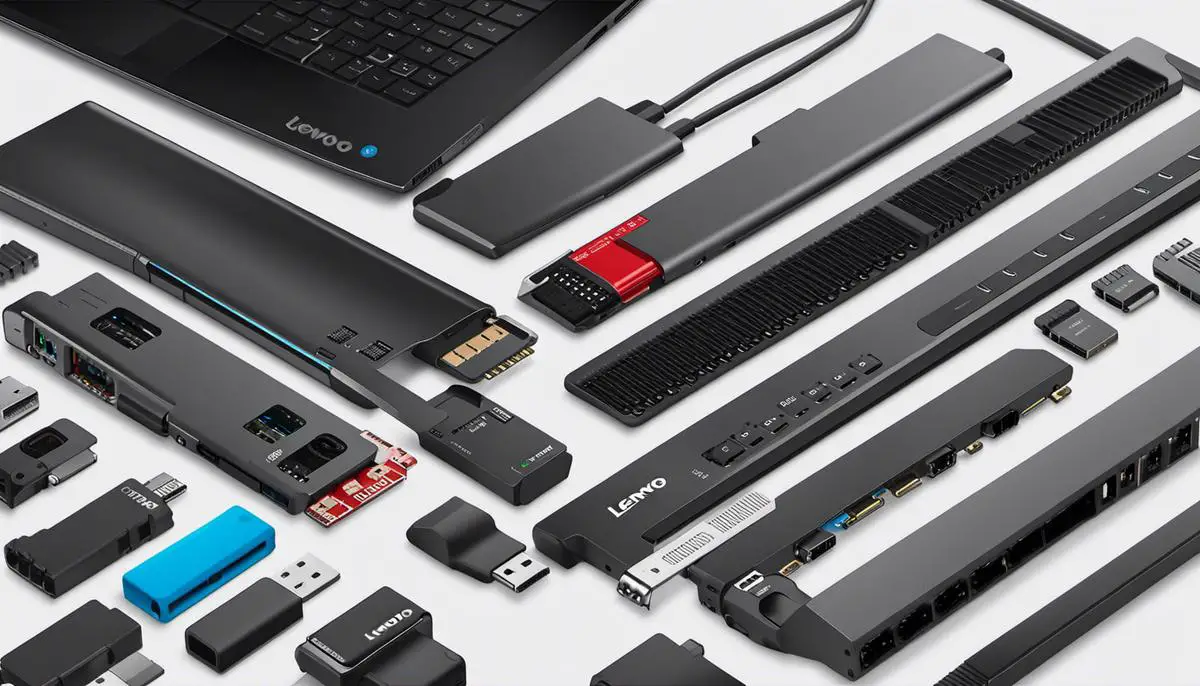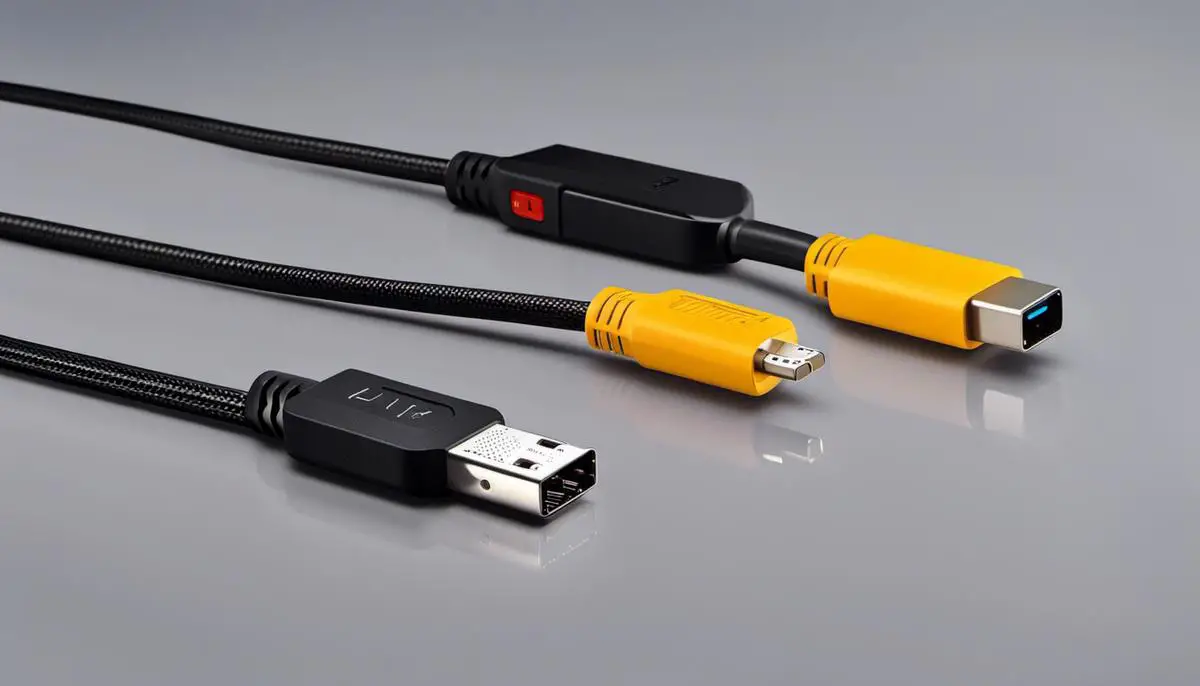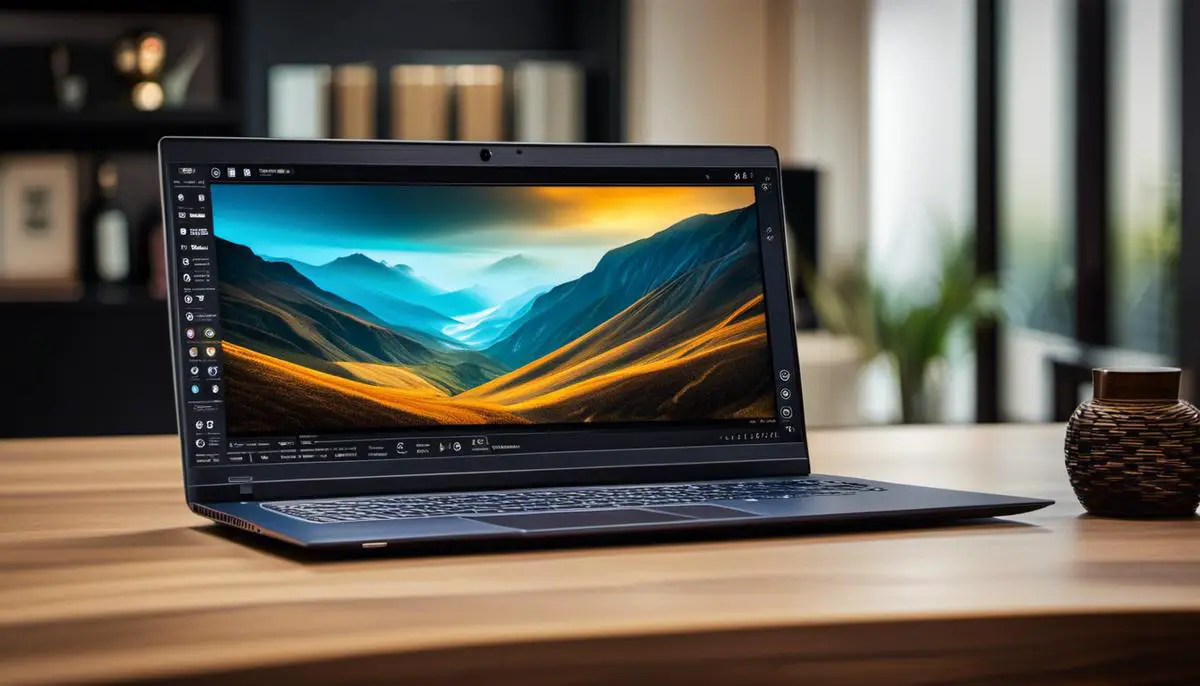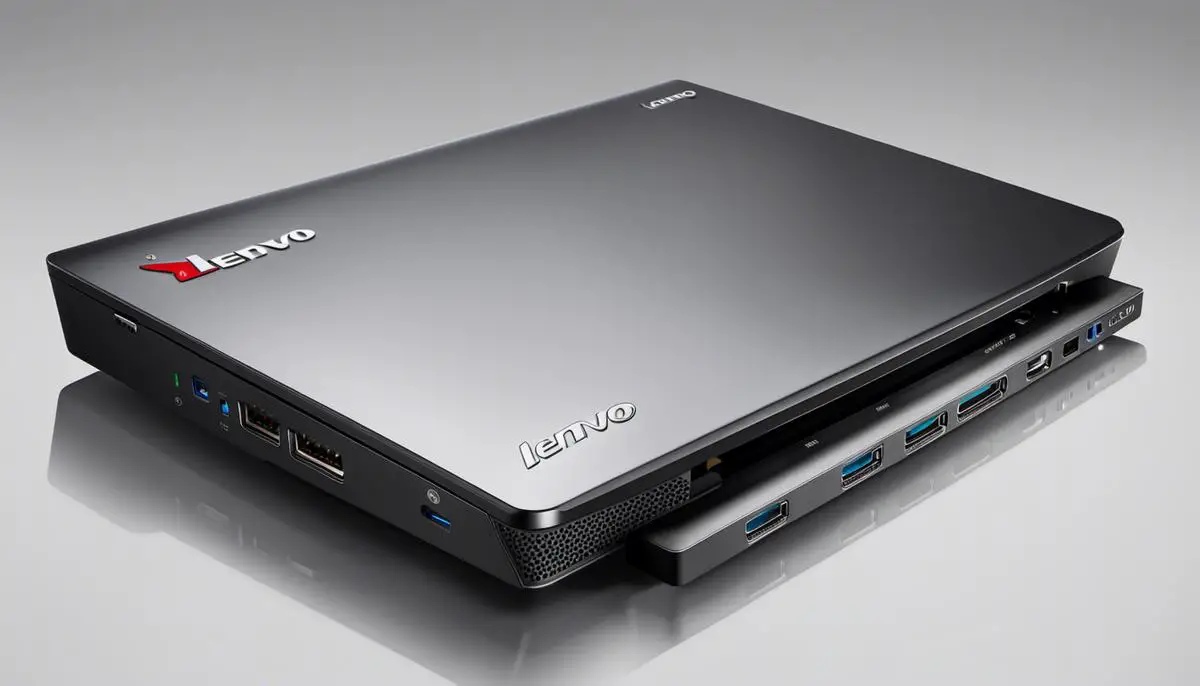Unlock the hidden potential of your Lenovo laptop by transforming it into a versatile external monitor.
This guide empowers you with step-by-step instructions on harnessing your laptop’s display capabilities, from deciphering ports to optimizing settings. Unleash the possibilities and elevate your productivity with this illuminating journey.
Understanding Input and Output Ports
Understanding the Types of Ports on a Lenovo Laptop
Understanding the types of ports that are on your Lenovo laptop can help you make the most out of your device.
These ports, designed to connect the laptop to other devices, include HDMI, VGA, DVI, and DisplayPort.
Each of these offers different advantages depending on your specific needs.
HDMI Ports
HDMI, or High-Definition Multimedia Interface ports, are common on most modern laptops, including Lenovo.
They allow both audio and visual signals to be transmitted from your laptop to another device, such as a TV or monitor.
If your Lenovo laptop has an HDMI port, it’ll typically be located on the side of the device, and it will fit a standard HDMI cable.
VGA Ports
VGA, or Video Graphics Array ports, are less common on modern laptops but can still be found on some Lenovo models.
They are typically used to connect your laptop to an older monitor or projector.
VGA ports transmit analog signals and are trapezoid in shape with several small holes for pin connections.
DVI Ports
DVI, or Digital Visual Interface ports, are less common than HDMI and VGA ports, but some Lenovo laptops still come equipped with them.
DVI ports provide a high-quality digital connection to external monitors.
They are larger than HDMI and VGA ports, and have a series of holes in a grid layout, with a single flat pin on one side.
DisplayPort
DisplayPort is a newer type of connection designed to replace VGA and DVI ports.
It offers audio and video transmission like HDMI, but can also support multiple monitors from a single connection.
If your Lenovo laptop includes a DisplayPort, it will appear similar in size and shape to an HDMI port but with one corner squared off, rather than rounded.
Related: Best Laptop for Multiple Monitors: The Ultimate Guide
In conclusion, identifying the different ports on your Lenovo laptop can be beneficial when setting up your home workspace or connecting to multiple displays. It’s always key to review your laptop’s specifications or user manual for exact port locations and capabilities.

Related: No Signal on Monitor | QUICK FIX
Acquiring the Right Cables and Adapters
Identifying the Right Cables and Adapters
The process of using your Lenovo laptop as a monitor requires the correct types of cables and adapters.
These components largely depend on the specific ports built into both your laptop and the device that you wish to use as a second display.
Types of Cables
Common types of cables for displaying visuals from a device include HDMI, VGA, DVI, or DisplayPort cables.
The most commonly used cable is the HDMI cable, due to its ability to transmit both audio and video data.
Inspecting your Lenovo Laptop for Ports
Check your Lenovo laptop for video output.
It could be a HDMI, VGA, Mini DisplayPort, or USB Type-C port.
The latter, USB Type-C, while often used for charging devices or information transfer, can also transmit video signals with the right technology supporting it, such as Thunderbolt 3.
Inspecting the Device to be used as Monitor
Just like your laptop, the device you want to use as a monitor will have a video input port. Identify this port, which could also be HDMI, VGA, DVI, DisplayPort, or USB Type-C.
Acquiring the Right Cables
Once you’ve identified the ports on both devices, you can easily find a cable to connect them.
If both devices have the same port, for instance, HDMI, you’ll just need a standard HDMI cable.
If they have different ports, such as your laptop has an HDMI port and your monitor has a DisplayPort input, then you’ll need an HDMI to DisplayPort cable.
Acquiring Necessary Adapters
In some cases, you might not find a direct cable for your devices’ port combination.
In such cases, you need an adapter.
For example, if your laptop has a USB Type-C port and your monitor is VGA, you’ll need a USB Type-C to VGA adapter.
You’ll then connect a standard VGA cable from your monitor to the adapter.
Hence, after identifying the input and output ports, you can figure out whether you need a single cable, a cable and an adapter, or a cable with in-built adapters to connect your Lenovo laptop to the secondary device you wish to use as a monitor.
Related: Unlock The Benefits Of A Portable Laptop Monitor

Configuring Display Settings
Identifying Display Settings on Lenovo Laptop
Firstly, to adjust the display settings on a Lenovo laptop, start by navigating to the system settings.
- You can do this by clicking on the Windows start button, typically located in the bottom left corner of the screen, and selecting “Settings” from the menu.
- Within the settings menu, locate and click on the option that says “System,” where you will find the “Display” option.
Setting Screen Resolution
In the Display settings, you can adjust your screen resolution according to your preference.
- To do this, scroll down to the section labeled “Resolution”.
- Click the drop-down menu next to this and select your preferred resolution from the provided list. Higher resolutions will provide a sharper image but may strain your laptop’s graphics capabilities. Lower resolutions might look less sharp but can improve performance for some tasks.
- After selecting your preferred resolution, click “apply” to make this change.
Adjusting Display Mode
The display mode can be adjusted in the same Display settings menu.
If you are connecting two screens to your Lenovo laptop, you can choose between several display modes such as “Duplicate these screens”, “Extend these screens”, “Show only on 1”, and “Show only on 2”.
If you choose “Duplicate these screens”, both screens will display the same content.
By choosing “Extend these screens,” you create a single, larger workspace that spans both screens.
The “Show only on…” option will display content only on the selected screen.
To adjust this, look for the section labeled “Multiple displays”, click on the drop-down menu, and select your preferred display mode.
Selecting Primary and Secondary Screen
To set one screen as your primary display and the other as your secondary display, you will need to navigate back to the Display settings menu.
- Within this menu, you will see a diagram of your connected screens labeled with corresponding numbers.
- Click on the screen you want to designate as your primary display, then scroll down and check the box that says “Make this my main display”.
- This will set the selected screen as the main screen where all applications will open by default. The other screen will then automatically be set as your secondary screen.
Saving Changes
After adjusting all your desired settings, make sure to save your changes.
Usually, after you have made a change, a notification will pop up asking you if you want to keep these display settings.
Click “Keep Changes” if you are satisfied with your selections, or click “Revert” to return to your previous settings.
This comprehensive guide will allow you to optimally use your Lenovo laptop as a monitor, helping you achieve the best possible setup for your individual needs.

Understanding how to use a Lenovo laptop as an external monitor not only extends its capability but also offers an economical alternative to purchasing a standalone monitor.

J.S. is the owner, content creator, and editor at Upgrades-and-Options.com. I’ve worked in the IT and Computer Support field for over 20 years. The server hardware in my computer labs has mostly been IBM, but I’ve supported Dell, HP, and various other hardware. In addition, as part of my lab administrator responsibilities, I’ve learned, supported, and repaired/upgraded network hardware such as Cisco routers and switches. READ FULL BIO >>
- Upgrading SSD Storage in the ThinkPad X9-15 Gen 1 Aura Edition
- How Quantum Computing Could Impact Everyday Laptops
- What Is The Difference Between Lenovo’s Pens? (with Part Numbers)
- Legion 5 Laptop Upgrade Guide: Game Like a Pro
- How to Replace Your Laptop Battery: A Step-by-Step Guide
- IdeaPad Gaming 3 Upgrade (Full Specs)
- Shut Down a Lenovo Laptop: Quick and Easy
- Lenovo LOQ 15IRX9 RAM and SSD Upgrade


